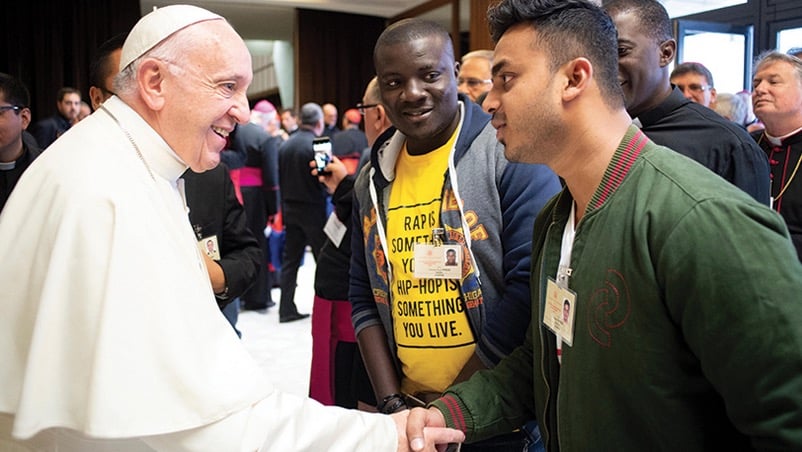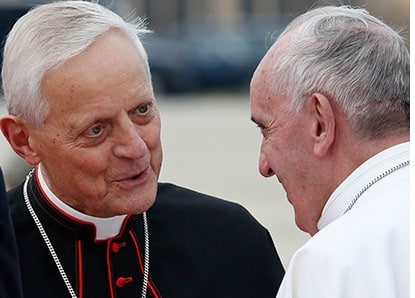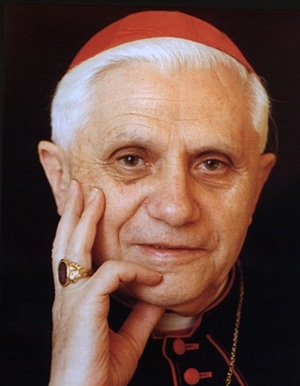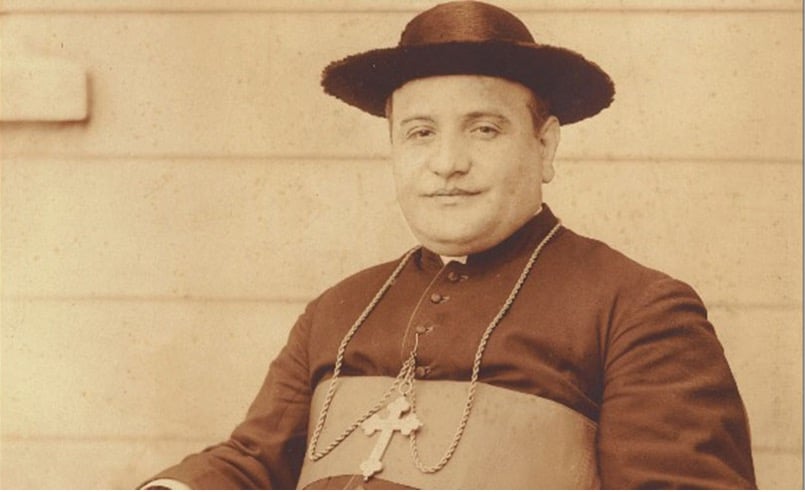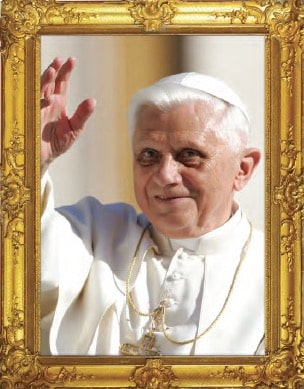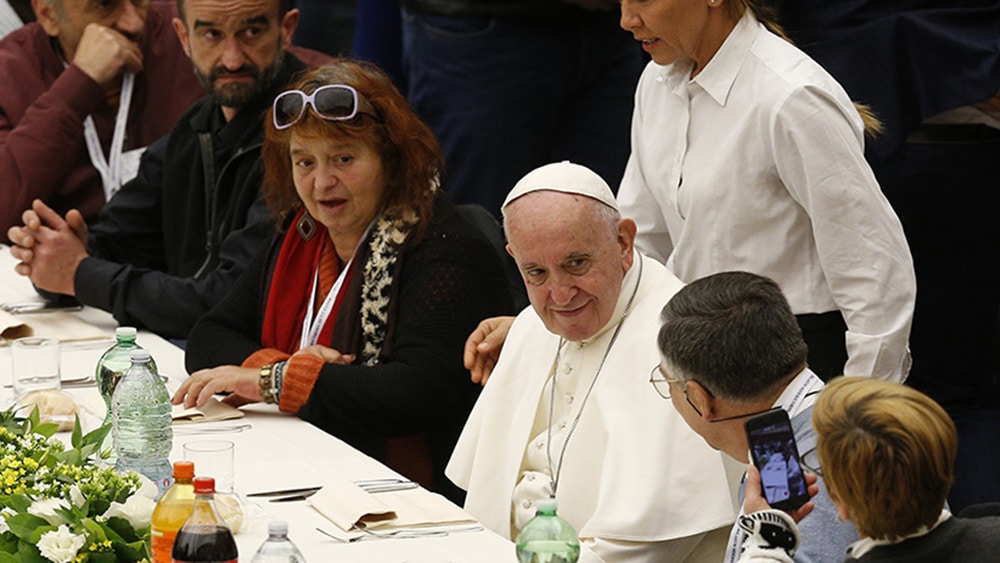Mother Catherine Kasper may have died 120 years ago, but her spirit is still very much present with the Poor Handmaids of Jesus Christ.
“She’s very close to the Sisters. Though she is in heaven, we can always turn to her there,” said Sister Mary Jo Shingler, the archivist for the Poor Handmaids of Jesus Christ provincial headquarters in Donaldson, Indiana.
In the 150th anniversary year of their congregation’s establishment in America, Sister Shingler and dozens of other Poor Handmaids from the United States will be traveling to Rome to meet other Handmaids from across the world and see their foundress raised to the altars.
“We’re just very excited about it. A number of us participated in the beatification process in ’78. There were just so many graces that came from that,” said Sister Judith Diltz, the provincial for the Poor Handmaids of Jesus Christ in America.
Led by the Spirit
Blessed Pope Paul VI beatified Catherine on April 16, 1978. The pontiff and Blessed Catherine will both be canonized on Oct. 14. On March 6, Pope Francis recognized a healing miracle through Blessed Catherine’s intercession, paving the way for her canonization.
“It’s just exciting to see that the values and the virtues that she represents are now put forward for the whole Church,” Sister Diltz told Our Sunday Visitor.
The charism that Blessed Catherine gave to the Poor Handmaids is an openness to the Holy Spirit that motivated the foundress and her sisters today to meet the spiritual and physical needs of the people they serve, especially the poor.
| Confidence in God |
|---|
|
Catherine Kasper’s belief in the good she could do by being a handmaid of Jesus gave her the confidence to build her own convent, beginning with just seven marks and forty pennies (less than two dollars), a paltry sum for wanting to construct a building. The forty pennies were quickly gone, used to obtain a building permit.
More information can be found through a recent pamphlet “Handmaid of Jesus: St. Catherine Kasper” published by OSV. |
“The Handmaid spirituality comes from her. We have gotten everything from her,” Sister Shingler told OSV.
In the 150 years since the congregation’s founding, the Poor Handmaids have operated more than 400 ministries in several countries that range from running orphanages, providing healthcare, social work and child care to education, farming, assisted living and helping refugees, as well as operating retreat facilities and homes for at-risk families.
“One of the things that’s unique to us is that we do things in a simple, roll-up-your-sleeves, get-involved-and-work-with-people way,” Sister Diltz said.
Following the example of Pope Francis, the Poor Handmaids also operate Earthworks, an environmental learning center in Plymouth, Indiana, that is dedicated to demonstrating and teaching the interconnectedness of all species.
“We think of ministry to people, but ministry to the earth is very important too, ” Sister Shingler said.
Sisterhood to Handmaids
Catherine Kasper was born on May 26, 1820, to poor farmer parents in Dernbach, Germany. At a young age, she earned a reputation for helping others and for having a empathy for the poor.
“From the very beginning she cared for the poor, even as a child in the little village she grew up in. She carried that for her entire life,” Sister Shingler said.
Catherine and her friends often walked to a Marian shrine near their village, singing hymns while she told stories about God and the Blessed Mother.
“She thought everybody heard God speaking in a voice within them,” Sister Diltz said.
Like-minded young girls gathered around Catherine, who founded a “religious association” that nursed the sick and cared for children from 1845 to 1848. They also often met for prayer, and showed an interest in living together as a religious community.
Assisted by Bishop Peter Josef Blum of Limburg, Germany, Catherine and four companions made their first vows in the parish church of Wirges and received the religious habit on Aug. 15, 1851. The Poor Handmaids’ congregation quickly grew, expanding its ministries and apostolic activities.
“What made her the saint she is was that she could, in all conditions, listen to God speaking to her and then carry out his will. Her letters are just filled with that whole concept, the guidance of the Spirit,” Sister Diltz said.
On June 1, 1870, the Vatican endorsed and confirmed the congregation, and Catherine became the first superior general of the Poor Handmaids of Jesus Christ. On May 21, 1890, the congregation received the final approval of its constitutions from Pope Leo XIII.
Even before the final approvals from Rome, the Poor Handmaids attracted followers and spread their ministry outside Germany to England, the Netherlands, India, Mexico, Brazil, Kenya, Nigeria and the United States.
The Poor Handmaids arrived in America in August 1868 in response to a call from the Diocese of Fort Wayne, Indiana, to assist in ministering to recently settled German immigrants. Eight Sisters arrived in New York before traveling to Hessen Cassel, just outside of Fort Wayne. They took charge of a parish school and nursed the sick in the area.
Celebrating joy
“We have a lot of artifacts that deal with what life was like for the Sisters in the late 1800s,” said Sister Shingler, who serves as the curator for the Poor Handmaids’ museum in Donaldson. The museum contains artifacts from many of the ministries the Handmaids have operated in the 150 years since arriving to the states.
An important ministry the Poor Handmaids have provided over the decades is education. Both Sisters Shingler and Diltz said they attended schools operated by the Handmaids and that the sisters’ example moved them to want to join the community.
“I was just so taken up by the life that they led. They were full of joy. They really related to people,” said Sister Shingler, who took her vows with the community in 1958.
“I just saw them as women who were doing something important with their lives. They seemed to be a very happy and joy-filled group, and that attracted me to look at them more closely,” said Sister Diltz, who is celebrating her 50th year as a Poor Handmaid.
To mark the U.S. community’s 150th anniversary, the Poor Handmaids have held special Masses, prayer services, talks and other events throughout the past year. The canonization of Blessed Catherine has provided them with an even bigger reason for celebration.
After the canonization, a few of the Poor Handmaids from the United States will travel to Germany for a special Mass in the church where their foundress was baptized. Today, there are about 550 professed Poor Handmaids across the world. As for the future, Sister Diltz said there is no “large vision” about where the order is headed.
“We just try to take one step forward in trust at a time,” Sister Diltz said.

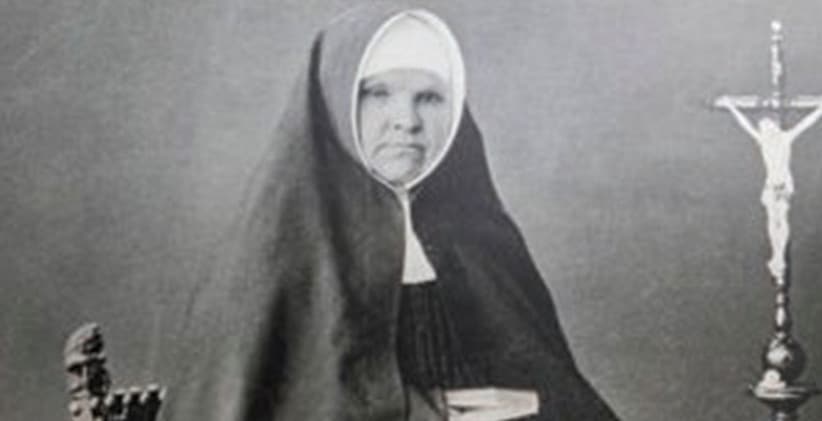
 But many neighbors offered their services in hauling and other tasks while mechanics worked for delayed payment. Catherine and friends personally formed the bricks for the small house. Heavy rains and a local famine hindered progress, but Catherine and associates carried on, taking on debt and trusting the Lord. Catherine prayed: “Dear Lord, now you have to tell me where I can borrow money. Of course, the payment of interest is part of your job, too.”
But many neighbors offered their services in hauling and other tasks while mechanics worked for delayed payment. Catherine and friends personally formed the bricks for the small house. Heavy rains and a local famine hindered progress, but Catherine and associates carried on, taking on debt and trusting the Lord. Catherine prayed: “Dear Lord, now you have to tell me where I can borrow money. Of course, the payment of interest is part of your job, too.”